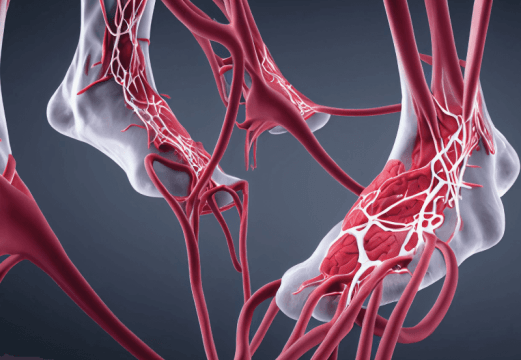Results of infrapopliteal territory revascularization in critical limb ischemia.
Compared against the general population, patients suffering from critical lower limb ischemia (CLI) not only experience seriously limited quality of life, but also face a significant higher risk of death and amputation.

Specifically, the optimal treatment for these patients remains uncertain. This uncertainty was sparked by the BASIL-1 (2005), which suggested the first treatment option for critical limb ischemia was a vein bypass, instead of a balloon angioplasty, despite the fact that only 25% of patients in that study had received infrapopliteal treatment.
The aim of the BASIL-2 was to determine whether a surgical bypass was superior to an endovascular intervention in terms of amputation or death. This multicenter study was carried out mainly in the UK (39 of 41 centers). It included patients with over 6-month life expectancy, with infrapopliteal disease treatable both ways (excluding patients with prior treatment of index limb, within 12 months).
The study randomized patients 1:1. Primary end point was amputation-free survival, defined as time to major amputation or all cause death. Secondary end points included time to all cause death, time to amputation, index limb major adverse events (MALE) and time to major cardiovascular event (MACE).
Read also: TAVI in Moderate Aortic Stenosis with Low Ejection Fraction.
Between July 2014 and November 2020, 345 patients were recruited: 81% were men, mean age 72.5; 50% of patients received a venous bypass and the remaining half the best possible endovascular treatment. Patients were followed up to 40 months.
63% of bypass patients and 53% of endovascular patients died or received a major amputation (adjusted HR 1.35, CI 95% 1.02-1.80; p=0.037). Mean time to amputation was 3.3 years in the bypass group and 4.4 in the endovascular group. As regards global mortality, 53% of bypass patients and 45% of endovascular patients presented this outcome (adjusted HR 1.37, CI 95% 1.0-1.87). When looking at major amputation, there was also a higher number of events in the bypass group, though with no statistical significance (adjusted HR 1.23, CI 95% 0.75-2.01).
When looking at safety, reintervention rate was higher in the endovascular group (HR 0.27, CI 95% 1.13-0.55). There were no significant differences as regards MALE and MACE or quality of life according to HRQoL questionnaires. Major adverse events rate was higher among bypass patients (17% vs 13%).
Conclusions
BASIL-2 outcomes indicate vein bypass as a first revascularization strategy was associated to 35% increased risk in major amputation or death in patients with critical lower limb ischemia (infrapopliteal disease). This difference was mainly driven by a higher number of deaths. The number of primary end point events show the baseline severity of this disease, and therefore, we should emphasize the need for early treatment.
These outcomes should be compared against the BEST-CLI (published in 2022), with different results as regards strategy.

Dr. Omar Tupayachi.
Miember of the Editorial Board of SOLACI.org.
Original Title: A vein bypass first versus a best endovascular treatment first revascularisation strategy for patients with chronic limb threatening ischaemia who required an infra-popliteal, with or without an additional more proximal infra-inguinal revascularisation procedure to restore limb perfusion (BASIL-2).
Reference: Bradbury, Andrew W et al. “A vein bypass first versus a best endovascular treatment first revascularisation strategy for patients with chronic limb threatening ischaemia who required an infra-popliteal, with or without an additional more proximal infra-inguinal revascularisation procedure to restore limb perfusion (BASIL-2): an open-label, randomised, multicentre, phase 3 trial.” Lancet (London, England) vol. 401,10390 (2023): 1798-1809. doi:10.1016/S0140-6736(23)00462-2.
Subscribe to our weekly newsletter
Get the latest scientific articles on interventional cardiology





